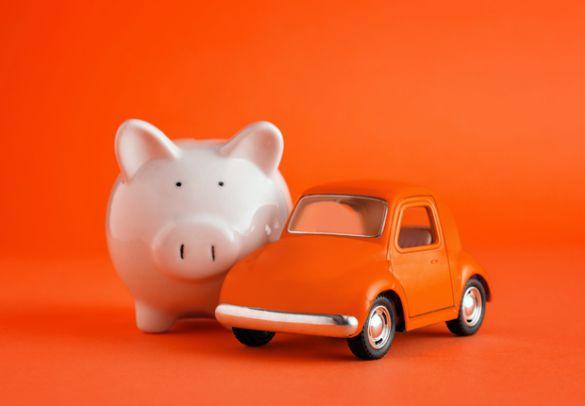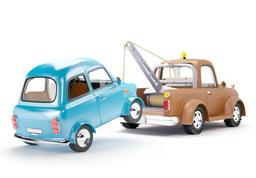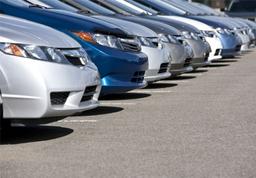So you’ve done all of your homework and decided on the very best make and model of vehicle that suits your needs to a T - great stuff! Now all you have to do is determine what kind of payment method aligns with your needs.
Yes, there are most certainly other ways to pay than cold hard cash inside a sack with a dollar sign on it (or an unmarked briefcase if that’s your preferred delivery system). And with so many different payment types, it can undoubtedly cause a bit of second-guessing and confusion when it finally comes time to transfer the money.
At carconnect, we love making things as simple and straightforward as humanly possible. Which is why we’ve put together a list of the most common payment types and the advantages and disadvantages for each. So keep reading to learn which would be most suited to you!
Cashola
There’s a common saying of ‘cash is king’. And sure, it’s a great way to pay for a new car if you have it on hand now; forget any interest payments or loan applications, you’re paid up from the get-go.
But in the real world, not many of us have enough cash sitting there ready to spend. Which means tightening up your budget and saving for the next few years (if not longer). So what happens if for whatever reason you’re desperate for a new set of wheels right now?
And if you do happen to have enough coin in your bank to go straight into a new car, are you comfortable with the bite it’s going to take out of your account? What happens if something unexpected happens (e.g. emergency dental, home repair, vet bill, etc.)? Murphy’s Law dictates that anything that can go wrong, will go wrong - is your cash flow okay to deal with it?
If your finances are sound and you’re flush with cash, cash might be the way to go. But if not, let’s look at some other options.
Credit cards
Nothing like those sweet, sweet points on big-ticket purchases, right? Paying with your credit card can definitely leave you swimming in lots of rewards points, but if you’re not diligent with paying it off you’ll be vulnerable for some sky-high interest rates which pretty much nullify any of the value you received in points!
To avoid getting yourself in hot water with your credit card it’s always imperative to give the t’s and c’s a proper read-through. This especially rings true if you’re considering using it to make a payment of tens of thousands of dollars in one go. So be sure to do your reading before laying down the plastic, guys.
Personal loan
If the car is for personal use only and won’t be tied to a business, a personal loan can be a good option. A personal (or unsecured) loan is where you submit an application for the amount you would like to borrow to pay for the vehicle to a lender and, once it’s been approved, the lender then transfers the specified amount of funds into your bank account.
This is quite different to a secured car loan in that there aren’t any of your assets held against the loan as security, which can however mean a higher interest rate and more difficult application process as it’s generally seen as higher risk.
Utilising your home loan
There are a couple of different ways you’re able to use a home loan to incorporate a car loan.
Option 1: Refinancing
Moving your mortgage to a different lender at the right time can save you a lot of money. Right now, interest rates are very low so it might be just the right time to do so! In the process, and if your home has increased in value and you have some equity available to you, you might be able to access the funds needed to pay for a new car. However, it’s important to understand all the fees involved in refinancing.
Option 2: Redraw on equity
Home increased in value? If your mortgage package includes a redraw account, you’ll be able to use that value increase (equity) to pay for a car, taken out of your redraw account.
While this may be an attractive option to some, you have to remember that should the market shift in the other direction and you end up with negative equity, it can be an absolute disaster of a situation to be in financially.
Either way, remember that the term you are borrowing over extends the amount of interest payable, so we’d suggest considering alternatives.
Financing
With the fact that interest rates are outlandishly low in mind, getting a finance loan or lease might be your best option right now. Especially if you go with an awesome finance broker who, unlike the banks, isn’t tied down to a few particular finance packages and can find great deals across a multitude of lenders.
Buy your new car for a great deal through carconnect today
While all of this payment type stuff might be a bit convoluted and disorienting, there’s seriously nothing more cut and dry than buying a new or used car through carconnect. If buying your next car for a super sharp price and not having travel from dealer to dealer every weekend in the process sounds like a fairytale, we’re the Once Upon A Time you’ve been looking for.
All you have to do is search for your new car and pop in a few details about yourself and we’ll take care of everything else! After collecting bids from dealers across Australia it’s simply a matter of choosing the best deal, then finalising payment and in no time at all your new vehicle will be delivered directly to your home or workplace.
Got a question? Give the friendly carconnect team a call now on 1300 880 008 or send us an online enquiry and we’ll be in touch soon.







